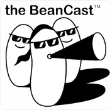In the usual way that seems to happen in the digital world, we've latched onto the idea of content creation as if it's a whole new paradigm in marketing communication. Certainly we give lip-service to the fact that digital storytelling is the evolution of TV and print, but we do so as if we are creating whole new methods and practices for storytelling that have never existed before. There's only one problem with this assumption: The rules of digital storytelling are EXACTLY the same as those that have always existed in classic direct mail.
A conversation recently with Frank Days, Director of Social Media at Novell, brought all this crashing home for me. Need to tell an elaborate and entertaining story that grabs attention for mutliple minutes? Direct Mail letters used to do this with four, six and sometimes 12 page letters that told deep and moving stories. Give a path to response using an easy annotated link via a YouTube video? Direct Mail has used the Johnson Box (the selling text beside the address block) the P.S., bolding and underlining to do this for a century. Provide entertaining games to engage the audience into action and involvement? Direct Mail has used stickers, poster, game boards, toys, pop-ups and all kinds of devices to engage and delight audiences.
Now don't misunderstand me here. I am not making a case for a resurgence of the 12-page direct mail letter. It was effective at one time, but today the medium of growth and opportunity is primarily in digital, and more specifically mobile digital. Yet in our rush to dismiss the past as old-school and "uncool," we are in effect dismissing a depth of knowledge and tactics that could be invaluable to us today. Because in the light of shortening attention spans, we have to remember that direct mail has already dealt with this problem, and has developed proven tactics for overcoming resistance and keeping people reading (or watching or playing.)
I have my own problems and battles with the Direct Marketing Association, so believe me when I say I understand the reticence of digital players to work with the organization. But facts is facts: They are the largest repository of direct resources, case studies and training materials in the world. They understand what works to tell a story and elicit an action. And it may be worth a trip to their archives, ye digital content gurus, in order to more clearly understand how content can be good and entertaining, while still working hard to motivate action.
And if you read this and all you can envision is your beautiful content being turned into a schlocky appeal, then I really pity your lack of perspective and experience. Because as much as you may be touting the power of content, you really have no concept of what your content is capable of achieving.

